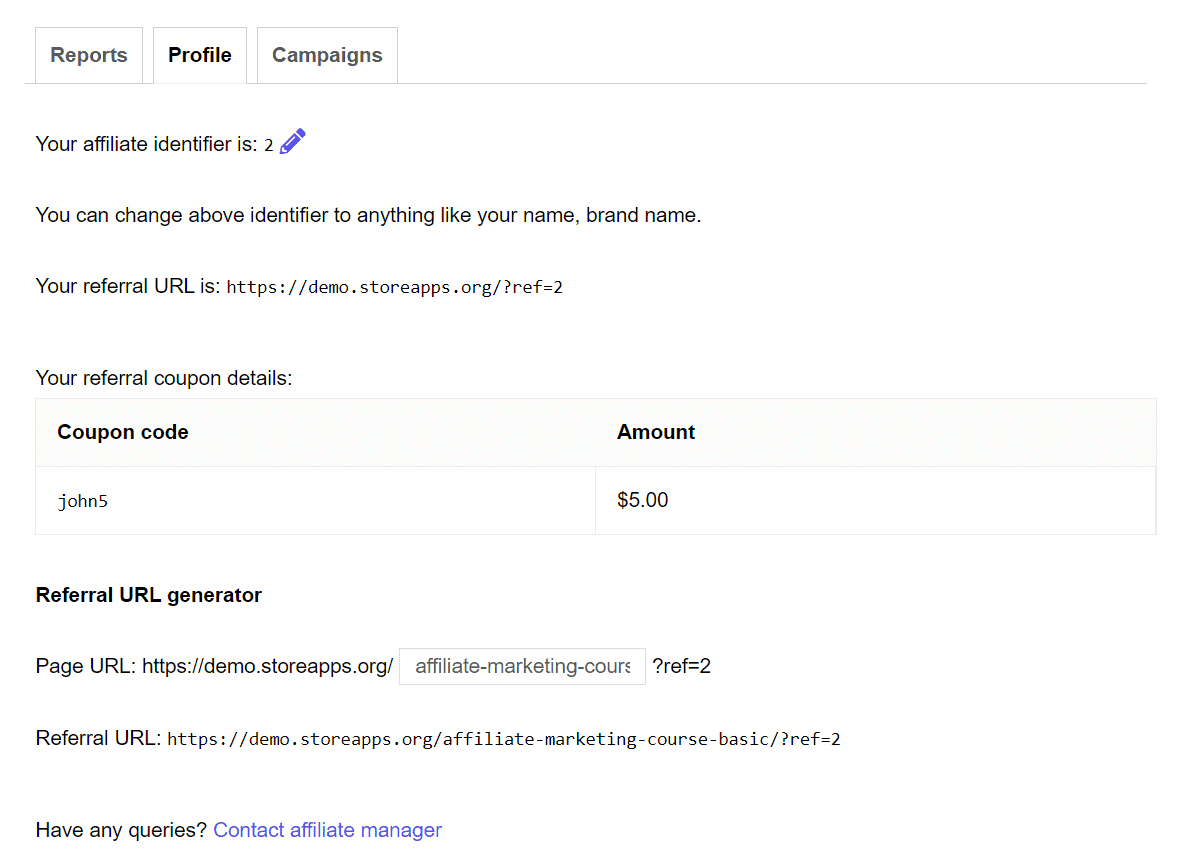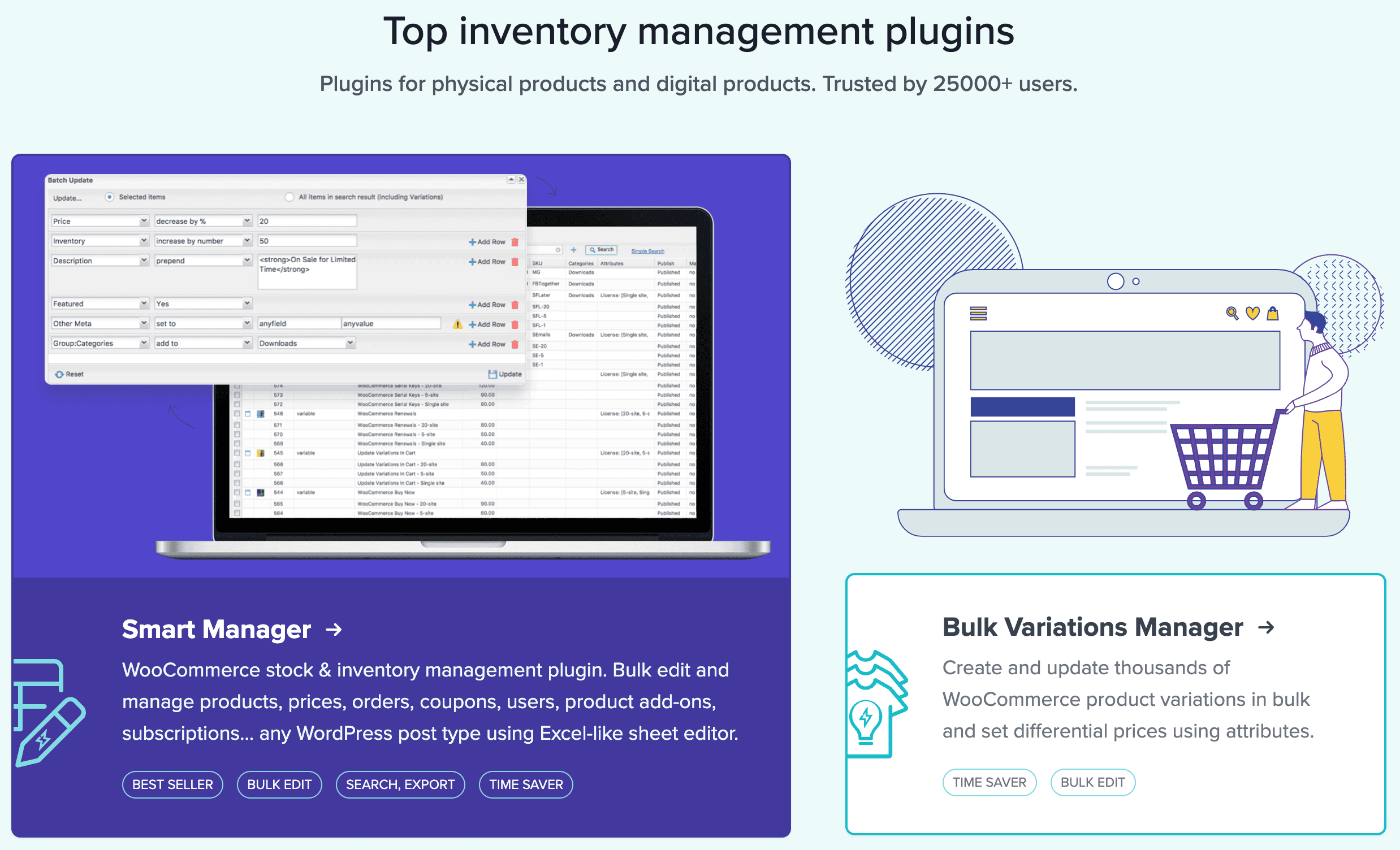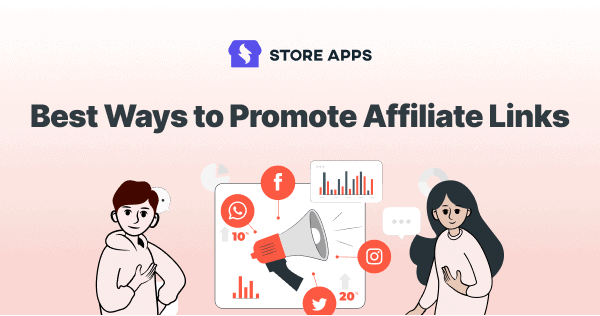Clicking on affiliate links could be easy. However, ensuring that the affiliate links will land in front of their target audience is crucial too.
After all, what would it amount to, if not seen and clicked on?
Be it landing pages or product pages, affiliate links are important for affiliate marketing.
There are several reasons affiliate links have enhanced the marketing journey.
Having said that, let’s start from the beginning and check out what affiliate links are and how to promote affiliate links using the best ways.
What are affiliate links?
An affiliate link is a URL used exclusively to track the traffic or sales that is sent to the website of the advertiser you are promoting as an affiliate partner.
An affiliate account has a customizable unique URL or referral link, which may contain a username, a series of randomized numbers and letters, or other identifiers.
Here’s one affiliate link example: https://demo.storeapps.org/?ref=2.
Plugins like Affiliate for WooCommerce also provide a coupon that can be used instead of the link for promotion.

This powerful tool allows you to manage referrals, sales, and commissions, make payments, create commission plans, and create marketing campaigns – all from one place.
Affiliates also have access to a self-care dashboard to track their affiliate commissions, clicks and sales.
Typically, you only get paid if the visitor buys something, but you may also get paid for leads.
Affiliate marketing programs track activity with cookies in addition to your ID. Affiliate links generate cookies on readers’ computers.
If the cookie duration is set for X days and the sales happen within those days, the sale will be credited to your affiliate account.
Before we check out the ways to promote affiliate links, let’s see how you get them!
How do you get affiliate links?
You must join a website’s affiliate program or partner network before you can promote affiliate links.
Join an affiliate network or affiliate program
First, find programs that align with your digital marketing goals, content topics and interests. Among the top partner networks are:
You can also sign up for relevant websites to promote their affiliate program, your friends whom you feel have the products that can be a game changer for users.
Log in to your affiliate account
Log into your affiliate account once you’ve been approved.
Your exclusive affiliate links will be automatically generated for you to promote. You may also get coupons to promote.
Paste the link into the content
You’ll find your affiliate link which you can copy and suffix to different product pages or landing page URLs.
For example, if an affiliate is promoting a product, the affiliate URL will be https://demo.storeapps.org/smart-manager/?ref=2
Choose from banners, text ads, videos, and swipe files, depending on the type of promotion you are running.
Keep track of your affiliate links
Your affiliate links are now live, so you can track their success from the dashboard.
10 effective ways to promote affiliate links
Your success depends on choosing the right affiliate products. But so is choosing the right channel to promote your affiliate link.
Let’s find out the best way to promote affiliate links:
Using affiliate links in tutorials
Tutorials are crucial to content-focused affiliate marketing. Reviews and comparisons are your moneymakers. Targeted sales result in actual sales. In your chosen niche, tutorials with product examples and screenshots are far more for traffic and authority building.
It’s important to have both if you want to build a brand.
Make sure potential customers know everything about the product. Don’t be afraid to mention potential weaknesses of the product.
This will help the customers to understand the complete details about how a product works and how it should be used.
You can use YouTube videos also for reviews and place the link in the description.
Finally, place at least one CTA on the page using your affiliate link.
Make resource pages affiliate-friendly
Your resources page can list the top tools and products that you endorse and use. These resources could include favorite services, brands, or a resource that you want to drive traffic to regularly.
Make sure you don’t add items that you don’t use.
Describe each product briefly and include your affiliate link, preferably one that leads to a free trial.
It is important to add a disclosure to every promotional page.
You must have an audience before sending out emails to your blog subscribers. You might want to send marketing emails or newsletters. Before doing so, you must also understand the purpose of those emails and newsletters.
There are several things your newsletter does. It’s a way to build relationships with your readers, promote your affiliate products and distribute blog content through your emails.
Start by creating an email sign-up form for your website.
To get visitors to sign up for your newsletter, you must share useful content.
Here is a goldmine of WordPress plugins that you can check out to reap benefits through email marketing.
The best part, you can try them for Free!
If possible, you should also offer perks such as your own exclusive guides and affiliate offers.
Retargeting ads
Another effective way to get in front of a potential audience is to pay for Google Adwords based on common search terms.
A similar approach applies to Facebook ads that target audiences or peer groups that match your ideal demographics.
It is particularly effective to highlight your affiliate commissions in these ads, provided they are competitive.
Moreover, retargeting ads are an excellent way to direct your audience back to your website who had once engaged with your business on social media or Google.
Your audience goes to social media for inside scoops. Make sure you share affiliate links on the social media platforms that your audience uses frequently. The same approach can be taken towards forums.
Promote your affiliate links with engaging posts. Don’t forget to vary the wording and imagery of your posts to grab affiliates’ attention. Consider hiring help, if you don’t have proper experience with promoting affiliate links via social media channels.
Since Instagram does not allow affiliate links, you can use coupons instead of links to promote products on this platform.
Join forums and discussion boards
Stay connected with trends and conversations in your niche by joining industry-related forums and discussion boards.
Furthermore, they provide a great way to find experts willing to share products. Show your expertise, answer their questions, and solve their problems.
You might even be able to get them to promote the brand if the product or service is a perfect solution to their problem.
Make sure you reach out to the relevant experts after you have established a presence in the forum or group. Tell them what’s in it for them and all the relevant information.
Include links to your products
Affiliates also sell ebooks and online courses. Another way to promote your affiliate link is to place it inside your product. Keep it subtle so it doesn’t seem like a sales pitch.
Product roundups
Product roundups also known as ‘best product reviews’ are some of the most conversion-driven ways to promote affiliate links.
This could be because the person exploring the product round-ups could be someone who must be in the earlier stages of purchasing. They must be still exploring their options. This could bring in more clicks on your links.
Moreover, round-up posts can be a great resource to test different products for conversions and then test, and write comprehensive reviews, and additional content on the product that the audience is willing to buy.
Want to advertise your affiliate links further? Podcasts could be the answer!
Most people listen to podcasts while doing their household chores, traveling, or cooking.
Even if they aren’t willing to purchase now, chances are that they are still interested in the topic. Hence, you can make a product recommendation that can include affiliate links.
A way to do this is to mention that there will be a surprise at the end of the podcast which will boost engagement. Further, you can share an exclusive discount code in the podcast description.
Here are other things you can do:
- Mention the product during the podcast.
- Adding an affiliate link in the description.
- Review the affiliate product on the podcast.
- Interview the affiliate product creator on the show.
Landing pages
A segment of the audience might not want to click on the affiliate link or some might even consider those as spam.
So, you can try landing pages instead of affiliate links or coupons to promote products. These pages will track commissions without the need of those links.
Landing pages can also help you talk about the features and benefits of the product in detail, along with customer reviews for the same. A call to action to lead the visitors to the product page can get the job done easily.
Affiliate for WooCommerce plugin also helps you create and assign landing pages to affiliates.

Furthermore, A/B testing your landing page shows that you have left no stone unturned to ensure that every element aligns with your audience’s liking.
The landing page can be marketed well through social media and email marketing.
Now let’s talk about what we shouldn’t do.
What to avoid when promoting affiliate links?
We believe you are already well-acquainted with how to promote affiliate links.
Now, let’s make sure to avoid these three common pitfalls when promoting your affiliate links:
Avoid promoting links across different industries
Your affiliate website must be relevant not only for keyword rankings but also for product-audience fit. It’s a good idea to target the same audience for different products within the same niche.
However, if you’re going to offer affiliate offers across industries, you need separate sites.
Avoid limiting affiliate links
Profit from affiliate marketing by diversifying your link types. These can be image links, external links, anchor links and hyperlinks to name a few.
Utilizing various link placement strategies can also help you make sure that they are visible to your audience which also increases the possibility of clicks and conversions.
Affiliate links that don’t add value
Over-placement of affiliate links is not a good strategy in the long run. Trust is key to generating sales.
Creating content that matches your visitors’ intent and gives them what they want is the only way to earn their trust.
Fault with images and link placement
Taking screenshots and uploading them to a specific platform right away is not the right approach.
Besides that, low resolution, incorrect dimensions and unoptimized file sizes can cause problems. Ensure compressing and resizing the images appropriately without compromising on the quality. Avoid irrelevant and misleading images.
In terms of links, ensure that the links do not include 404 errors, incorrect URLs and poor placement of links. To make sure none of these problems occur, consider opting for regular testing.
Not disclosing affiliate links
Disclosing links on your website showcases full transparency. The audience must know if the brand is making money by commissions or clicks.
Doing so also showcases that you adhere to FTC’s (Federal Trade Commission) rules.
Here are some best practices to do that:
- Using clear and direct language.
- Locating the link in an accessible place.
- Use personalized words to connect better with the audience.
When selling, it is primarily to build a target audience, which helps to ensure that you are selling to the right people.
Once you build a target audience, it’s time to build social proof.
A huge chunk of audiences tend to look at the social proof before purchasing a product. Social proof can be built through testimonials, customer success stories, case studies, and showcasing ratings to name a few.
Without social proof, you are just asking your audience to trust you blindly, which certainly doesn’t work well. Rather building trust can go a long way in amplifying sales.
We are sure you must’ve got detailed answers to your query about how to promote affiliate links.
Conclusion
We are sure that with this information, you will know where to find your affiliate link and how to utilize it for affiliate marketing. Through the options listed above about how to promote affiliate links, you can choose where you want to place your affiliate links.
By ticking the boxes of the above do’s and don’ts we are sure that you’ll get the results you’ve envisioned!
Feel free to let us know how these ideas worked out for you!
FAQ
What are some of the best platforms to promote your affiliate links?
Some of the best platforms to promote your affiliate links include:
- YouTube
- TikTok
How much does Amazon affiliate pay?
Amazon’s commission ranges from 1% to 20% depending on the product category.
Do affiliate links improve SEO?
Based on SEO, external links are vital in helping search engines gauge the authority and credibility of a website.
